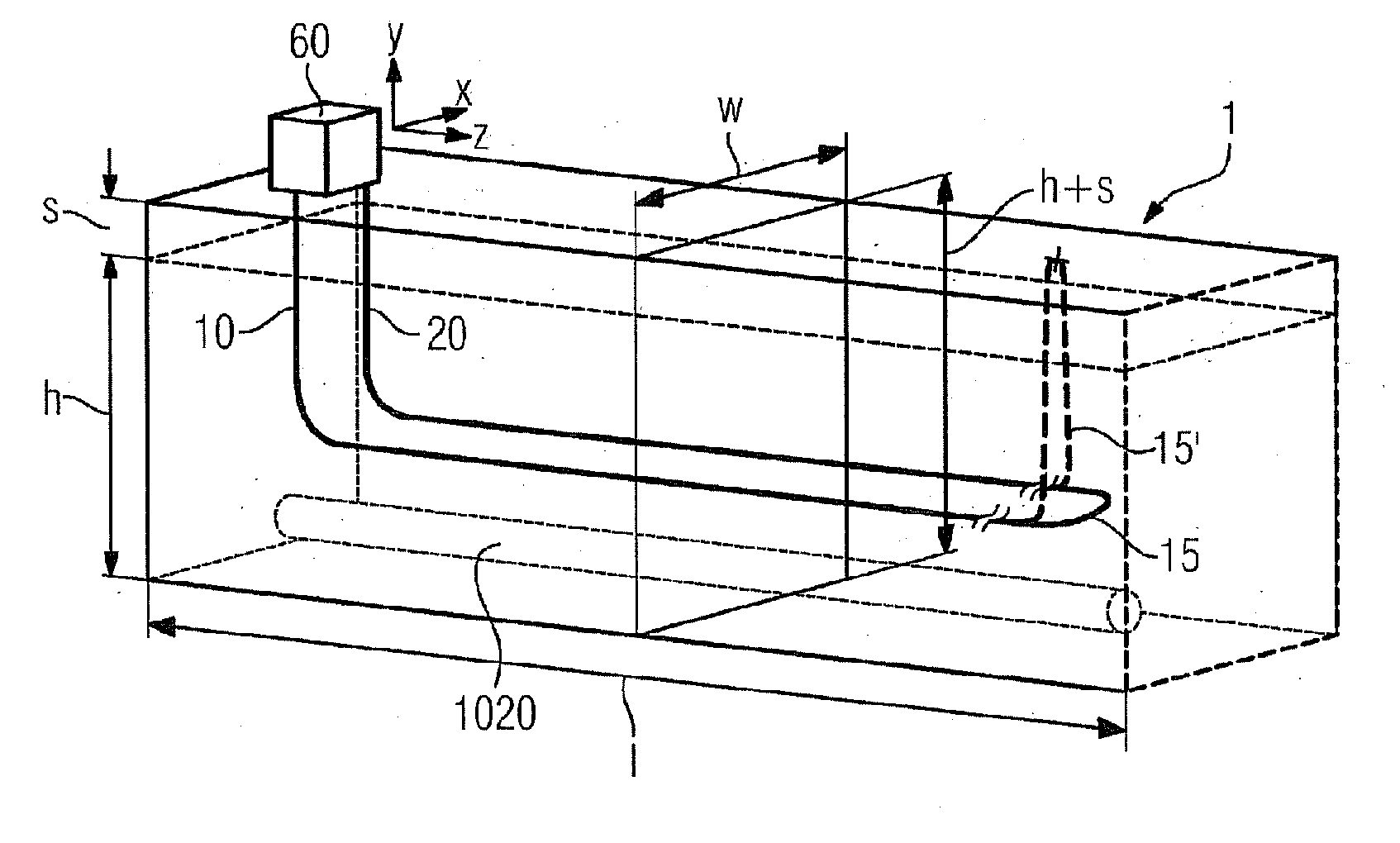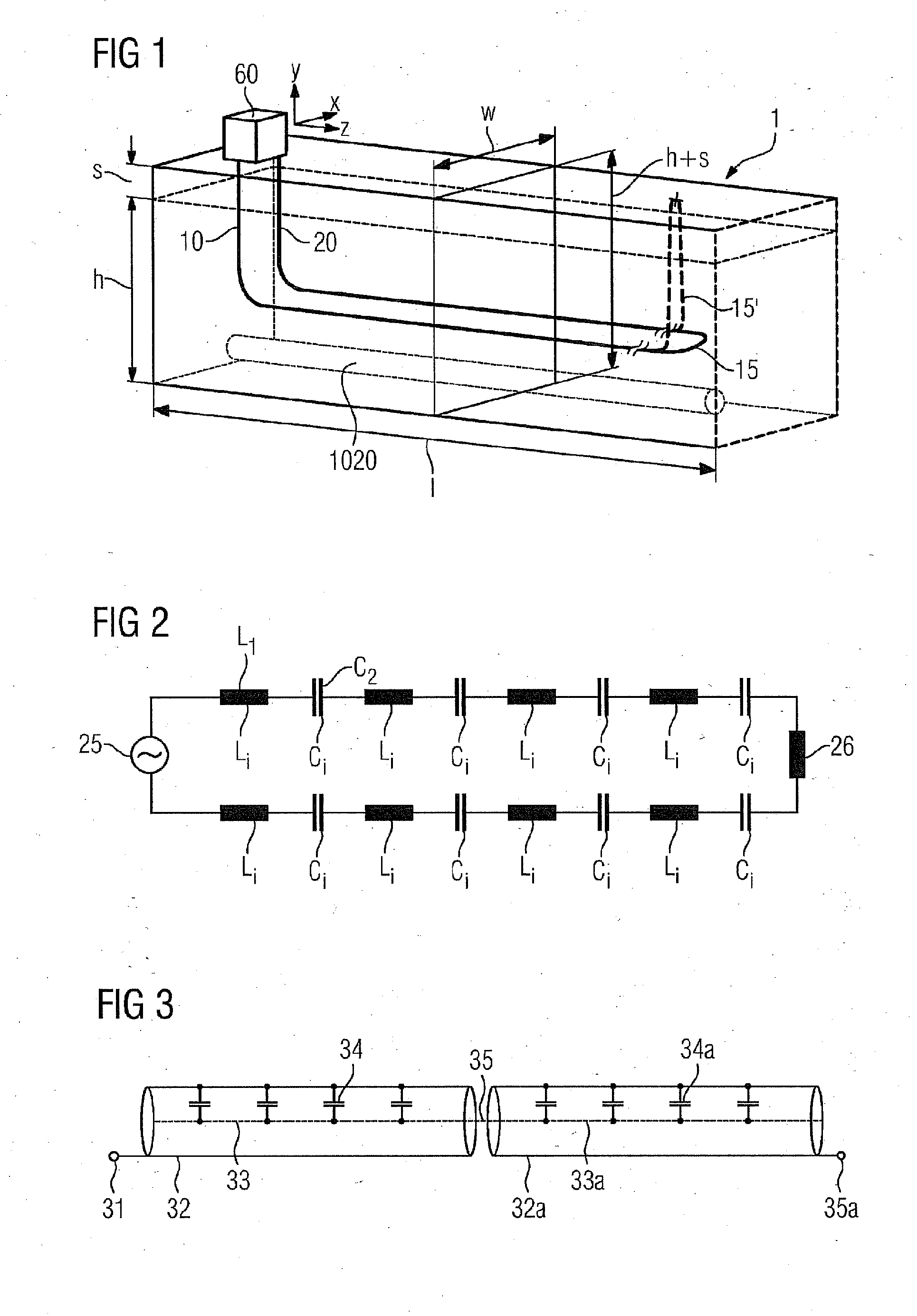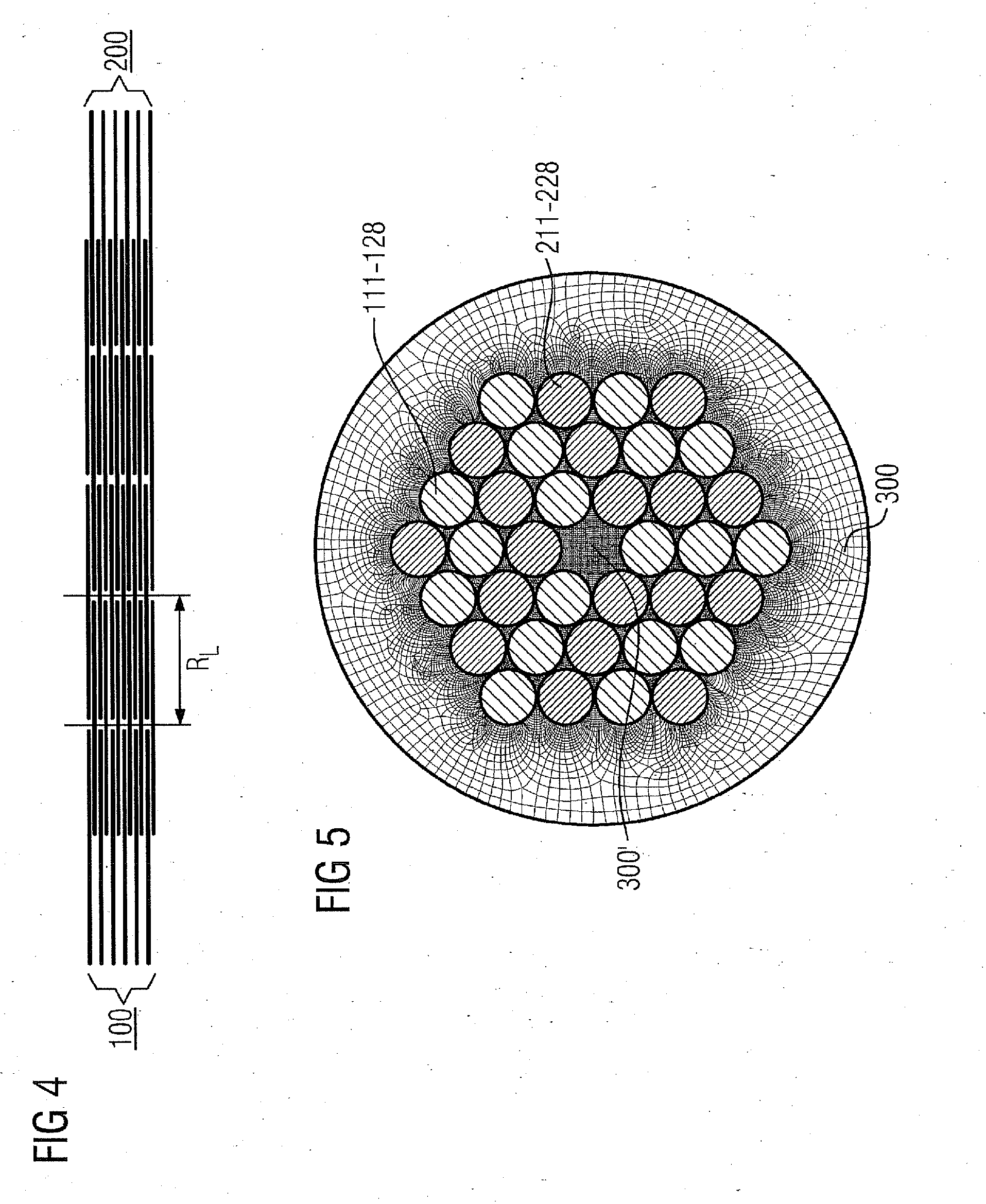Apparatus for the Inductive Heating of Oil Sand and Heavy Oil Deposits by way of Current-Carrying Conductors
a technology of inductive heating and conductors, which is applied in the direction of induction heating, insulation, and wellbore/well accessories, etc., can solve the problems of high production costs, high production costs and expensive high-voltage ceramics, and inability to control the reactive power of the reactive power, so as to reduce or avoid the addition of ohmic losses , the effect of increasing the resistan
- Summary
- Abstract
- Description
- Claims
- Application Information
AI Technical Summary
Benefits of technology
Problems solved by technology
Method used
Image
Examples
Embodiment Construction
[0041]FIG. 1 shows an oil sand deposit referred to as a reservoir, with reference always being made to a rectangular unit 1 of length 1, width w and height h when making specific observations. The length 1 may, for example, measure up to some 500 m, the width w may measure 60 to 100 m and the height h may measure approximately 20 to 100 m. It should be taken into consideration that, starting from the earth surface E, an ‘overburden’ of thickness s up to 500 m may be provided.
[0042]FIG. 1 shows an apparatus for the inductive heating of the reservoir detail 1. This may be formed by a long, i.e. measuring several hundred meters to 1.5 km, conductor loop 10 to 20 laid in the ground, the outgoing conductor 10 and the return conductor 20 being guided beside one another, i.e. at the same depth, and being interconnected at the end via a member 15 inside or outside the reservoir. At the start, the conductors 10 and 20 are guided down vertically or at a flat angle and may be supplied with ele...
PUM
 Login to View More
Login to View More Abstract
Description
Claims
Application Information
 Login to View More
Login to View More - R&D
- Intellectual Property
- Life Sciences
- Materials
- Tech Scout
- Unparalleled Data Quality
- Higher Quality Content
- 60% Fewer Hallucinations
Browse by: Latest US Patents, China's latest patents, Technical Efficacy Thesaurus, Application Domain, Technology Topic, Popular Technical Reports.
© 2025 PatSnap. All rights reserved.Legal|Privacy policy|Modern Slavery Act Transparency Statement|Sitemap|About US| Contact US: help@patsnap.com



